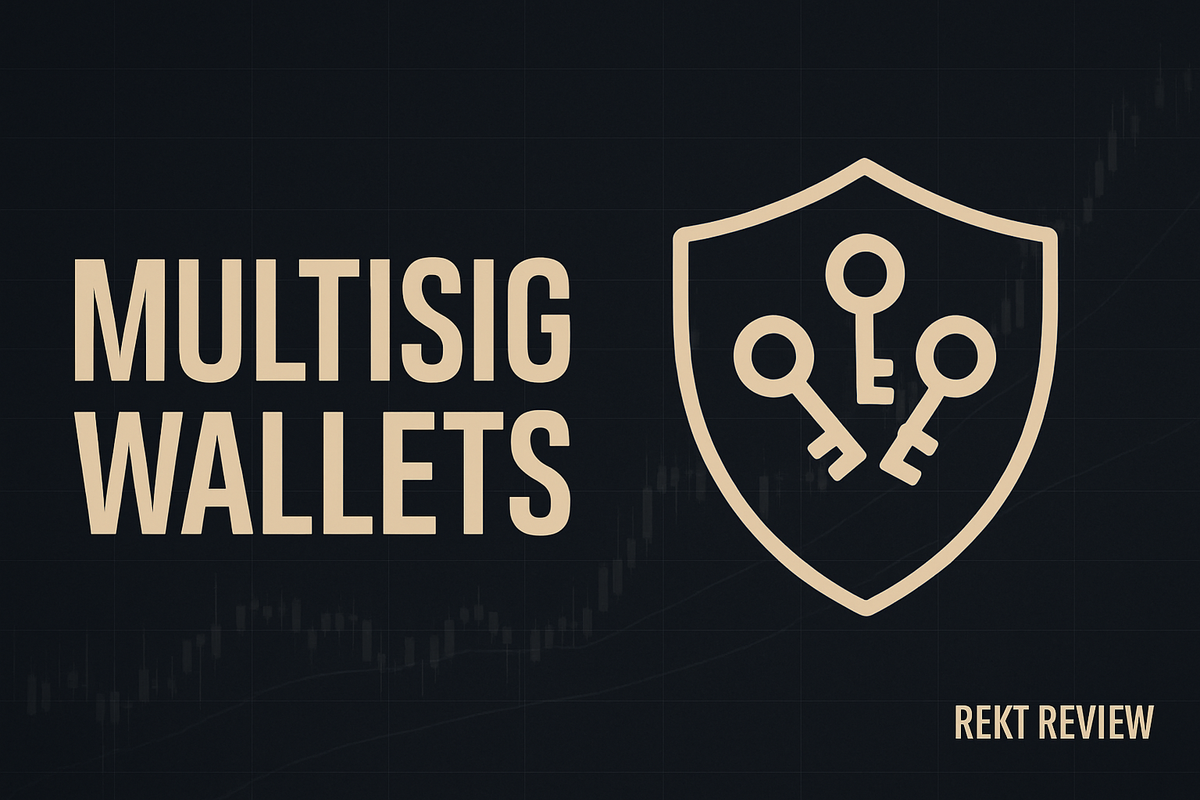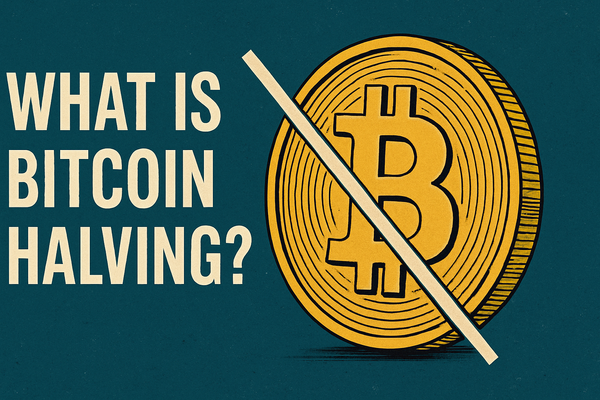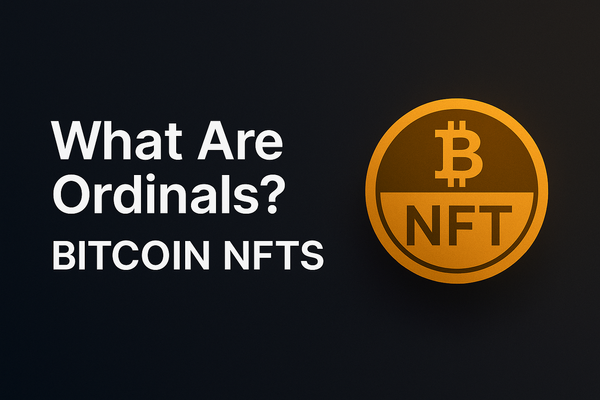What Is a Multisig Wallet? A Beginner's Guide to Enhanced Crypto Security
A multisig wallet adds extra protection to your crypto by requiring multiple approvals to complete a transaction. Find out how it works and why it matters.

In the world of cryptocurrency, securing digital assets is a top priority. While traditional wallets depend on a single private key, a growing number of users are turning to multisignature (multisig) wallets for greater protection. Multisig wallets require multiple approvals before a transaction can be completed, making it much harder for hackers or malicious actors to access funds. This extra layer of security is especially valuable in an environment where self-custody and personal responsibility are essential.
Beyond just security, multisig wallets offer flexibility for groups and organizations. They allow businesses, families, or investment clubs to share control over funds without giving any one person full access. Whether you're managing company reserves or simply protecting your personal savings, understanding how multisig wallets work can help you make smarter decisions in the crypto space.
What Is a Multisig Wallet?
A multisig wallet, short for multisignature wallet, is a type of cryptocurrency wallet that requires two or more private keys to authorize a transaction. Instead of depending on a single private key, control is divided among multiple parties or devices. This approach significantly reduces the risk of loss due to hacking, theft, or mismanagement.
Traditional wallets rely on just one private key, meaning if that key is lost or compromised, the funds could be stolen forever. In contrast, a multisig wallet distributes the responsibility across several key holders. A transaction is only approved when a predetermined number of signatures, like two out of three, are collected. This setup makes it much harder for bad actors to gain full control and adds a strong layer of protection for users.
How Does a Multisig Wallet Work?
A multisig wallet operates on an “M-of-N” system, where M is the minimum number of signatures required out of N total participants. For example, in a 2-of-3 setup, any two out of three key holders must approve a transaction before it can be processed. This method ensures that no single person can move funds without consent from others.
When a transaction is initiated, it remains incomplete until the required number of signatures is collected. Only after meeting this condition does the network confirm the transaction. Multisig wallets can be customized with different signing rules depending on the user's needs, offering a balance between security and flexibility. Whether it's 2-of-3 for small teams or 4-of-5 for large organizations, multisig setups can be tailored to fit different levels of trust and risk management.
Advantages of Multisig Wallets
One of the biggest advantages of multisig wallets is enhanced security. Because multiple private keys are needed to complete a transaction, a hacker would need access to several keys at once, not just one. This reduces the risk of theft and offers a strong defense against phishing attacks, keylogging, or device loss.
Multisig wallets are also ideal for shared accounts. Businesses, families, and organizations can use them to ensure that no single person has full control over critical funds. They help prevent internal fraud and add a layer of accountability among group members. Additionally, multisig setups protect against the loss of a single private key, offering peace of mind for long-term crypto storage.
Disadvantages and Considerations
While multisig wallets offer strong security, they also come with added complexity. Setting up a multisig wallet requires technical knowledge and careful coordination among all participants. If users are unfamiliar with the process, mistakes during setup could make funds difficult or even impossible to access.
Transaction approvals can also be slower, especially if multiple key holders are in different locations or unavailable. In emergency situations, waiting for signatures could cause delays. It’s important to weigh the extra security against the potential inconvenience, especially for users who need quick and easy access to their crypto.
Common Use Cases
Multisig wallets are widely used by businesses and institutions to manage crypto funds securely. In corporate settings, requiring multiple approvals helps prevent unauthorized transactions and ensures that financial decisions are made collaboratively. Escrow services also rely heavily on multisig wallets to hold funds until all parties meet the terms of an agreement, offering a trustless way to handle transactions between strangers.
On a personal level, multisig wallets are a smart choice for joint accounts, family funds, or shared investment portfolios. For example, two parents could set up a wallet where both must approve any spending of their child's savings. They are also popular among security-conscious individuals who want to split keys between devices, locations, or trusted friends. These flexible use cases show how multisig wallets can fit both simple and complex financial needs.
Popular Multisig Wallet Providers
Several trusted providers offer multisig wallet solutions for individuals and organizations. Electrum is a popular choice among Bitcoin users, known for its open-source design and flexible security settings. Casa offers user-friendly multisig wallets geared toward individuals who want maximum protection without the complexity.
For Ethereum and other assets, Gnosis Safe is a widely used platform that supports advanced multisig functionality and integrates with decentralized applications (dApps). Choosing the right provider depends on your specific needs, such as asset type, ease of use, and the level of security you require.
Multisig Wallet FAQ
A multisig wallet is a cryptocurrency wallet that requires multiple private keys to authorize a transaction, adding extra layers of security.
In a 2-of-3 setup, any two of the three key holders must approve a transaction for it to be successfully completed.
Multisig wallets enhance security, reduce risks of single-point failure, and are ideal for shared ownership of crypto assets.
No, individuals can also use multisig wallets to protect personal funds by distributing access across devices or trusted contacts.
Yes, as long as the required number of signatures remains available based on the wallet's setup (e.g., 2-of-3, 3-of-5).
Popular multisig wallet providers include Electrum, Casa, and Gnosis Safe, each offering different features and asset support.
No, compatibility depends on the wallet provider. Some support Bitcoin, while others focus on Ethereum or other networks.
Setting up a multisig wallet can be more complex than a regular wallet, but many providers offer step-by-step guidance.
Conclusion
Multisig wallets offer a powerful way to boost security and share control over crypto assets. Whether you're protecting personal funds or managing a business treasury, multisig technology provides flexibility and peace of mind. Understanding how it works is key to making smarter, safer decisions in the crypto world.





